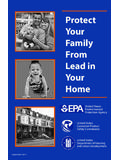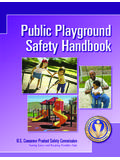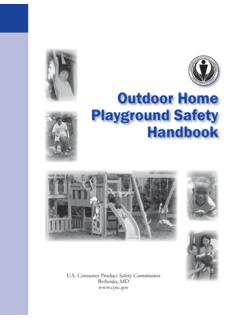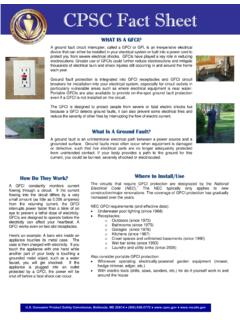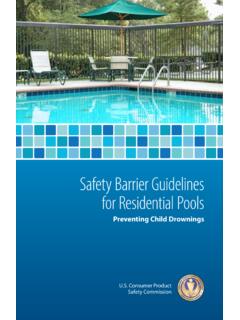Transcription of Art and Craft Safety Guide
1 Art and Craft Safety Guide U. S. Consumer Product Safety Commission 4330 East West Highway Bethesda, MD 20814 Pub. No. 5015 In partnership with The Art & Creative Materials Institute (ACMI) Arts, crafts & Theater Safety , Inc. (ACTS) The National Art Education Association (NAEA) 2 Table of Contents How to Use This 3 Regulation of Art Materials .. 3 Sources of Health and Hazard 3 Section I Children s Arts and crafts .. 5 Guidelines for Selecting Art and Craft Materials for Children .. 5 Safety Rules to Be Followed When Children Are Using Art Materials .. 5 Section II General Hazards Associated with Art and Craft Materials.
2 6 Types of Hazards .. 6 General Precautions: Storage, Housekeeping, Protective Gear, and Safety Rules .. 6 General Safety and Hygiene Rules .. 6 Fire Safety .. 7 Storage and Precautions for Chemical Hazards .. 7 Disposal Precautions for Chemical Hazards .. 8 Protective Equipment .. 8 General First Aid .. 10 Summary of Ways to Minimize Risks .. 10 References .. 10 Section III Hazards Associated with Specific Art and Craft 11 Ceramics and Clay .. 11 Computers .. 12 Drawing .. 12 Gems (Lapidary) and Stones .. 13 Glass .. 13 Glues/Adhesives .. 14 Leather and Other Animal Products.
3 14 Metals .. 15 17 Paper and Canvases .. 19 Photographic Materials .. 19 Plastic .. 20 Printmaking .. 22 25 Solvents .. 25 Textiles .. 26 Waxes .. 27 Woodworking .. 27 References .. 28 Glossary .. 29 Index .. 30 3 How to Use This Guide This Guide contains three sections. Section I is a general Guide for the use of art and Craft supplies with children. Section II is an overview of the potential hazards associated with art and Craft materials and provides applicable Safety and first-aid information. Section III has more detailed information about specific art and Craft disciplines and associated materials.
4 A glossary at the end of this Guide provides definitions of terms. Anyone using art or Craft materials will find this information beneficial; however, note that local, state, and federal agencies, such as the Occupational Safety and Health Administration (OSHA) and the Environmental Protection Agency (EPA) may require procedures that are more stringent for paid employees than for hobbyists. Whenever possible, this Guide directs professionals to other sources of information about requirements that may supersede the recommendations presented here. Regulation of Art Materials The Consumer Product Safety Commission (CPSC) is an independent regulatory agency charged with protecting the public from unreasonable risks of injury or death associated with consumer products.
5 The CPSC requires labeling of art materials that have the potential to cause adverse chronic health effects under the Federal Hazardous Substances Act (FHSA). Specifically, an amendment to the FHSA, the Labeling of Hazardous Art Materials Act (Public Law 100- 695) or LHAMA made mandatory many of the requirements of the labeling of art materials as set forth in the ASTM International (ASTM) standard designated D-4236-88 [ 1277]. ASTM D-4236 outlines procedures for developing precautionary labels for art materials that have the potential to produce chronic adverse health effects [16 CFR (b)(8)(i)].
6 Under the FHSA, an art material is defined as any substance marketed or represented by the producer or repackager as suitable for use in any phase of the creation of any work of visual or graphic art of any medium [ 1277(b)(1)]. Children s products that meet this definition include, but are not limited to, crayons, chalk, paint sets, colored pencils, and modeling clay. It is recommended that parents/guardians purchase only those products labeled with the statement Conforms to ASTM D-4236 (CPSC Document #5016) and that do not have any cautionary warnings on the label.
7 Moreover, under the FHSA, most children s products that contain a hazardous substance are banned, whether the hazard is based on chronic toxicity, acute toxicity, flammability, or other hazard identified in the statute. However, the Commission may exempt art materials satisfying all three of the following criteria: (1) the inclusion of the hazardous substance is required for their functional purpose, (2) the products are labeled with adequate directions and warnings for safe use, and (3) they are intended for use by children who are sufficiently mature, and may reasonably be expected, to read and heed such directions and warnings (15 USC 1261(q)(1)(A)).
8 For more information on the requirements for art materials, contact the CPSC Office of Compliance, Washington, DC 20207, telephone: 301-504-7913. Sources of Health and Hazard Information Under the Occupational Safety and Health Administration (OSHA) Hazard Communication Standard (HCS), chemical manufacturers are required to develop a Material Safety Data Sheet (MSDS) for each hazardous chemical they produce and import [29 CFR (g)]. The MSDS contains a variety of information including the hazards associated with the chemical(s) and precautionary information for safe handling and use.
9 However, the chronic hazards described in the MSDS may not be applicable to the casual user, such as someone engaging in an art activity one time. Be aware that a MSDS can become outdated as new information becomes available, particularly concerning long- term or chronic exposures. Manufacturers must provide the date of preparation or the date of the last change made to the MSDS, so be sure that you have the most current document available. According to OSHA requirements, employers of people working with chemicals must provide an MSDS for the materials used, training in federal and local regulations governing the use and disposal of materials and waste, the proper protective equipment, and other precautions.
10 More information about OSHA regulations and mechanisms for employees to report unsafe practices can be found at Disposal practices are required to follow the Environmental Protection Agency s (EPA) Resource Conservation and Recovery Act (RCRA), which tightly governs all garbage and industrial waste. More information is available online ( ) Many sources for health and hazard information are available on the web including the National Library of Medicine website ( ) which has links to sites such as Toxnet and Toxtown, the Integrated Risk Information System (IRIS, ), the National Toxicology Program (NTP, ), and the International Agency for Research on Cancer (IARC, ).
